Christie's to Offer Syd Levethan: The Longridge Collection in London
The Longridge Collection is one of the most prominent and distinguished collections of British and Northern European decorative arts. Photo: Christie's Images Ltd 2010.
LONDON.- Christie’s announced that they will offer Syd Levethan – The Longridge Collection in London on 10 and 11 June 2010. One of the most prominent and distinguished collectors of British and Northern European decorative arts, the late Syd Levethan assembled the Longridge Collection over a period of 30 years and was dedicated to acquiring only the best works of art available to him. He created one of the most comprehensive collections of English delftware, slipware, textiles, medieval bronzes, metalwork, ivory carvings and intricately carved boxes. The collection will offer 300 lots and is expected to realise in excess of £4 million, with individual estimates from £500 to £350,000.
Andrew McVinish, Director of Private Collection sales at Christie’s, London: “We are honoured to be able to present to the market this extraordinary collection assembled by Syd Levethan. This is one of the most outstanding collections of European decorative art, ceramics and furniture, amassed by an individual determined to acquire the best. As a result, every work boasts impeccable quality, and provenance, with many of the items having been acquired at the historic sales of celebrated collections including the `Rous Lench’ Collection, the Billington Collection, the Kassabaum Collection, the Chorley Collection and the Richmond Collection. We look forward to welcoming collectors to Christie’s in June for the auction, which offers the rare chance to acquire historically important treasures of European decorative art.”
Highlights of the Longridge Collection
• Delftware production began in Britain in the 16th century and was introduced from Holland. The collection to be presented at Christie’s is one of the finest ever offered at auction and includes chargers, punchbowls candlesticks, tankards, jugs, wine bottles, drug jars and table wares, all dating to the 1600s and 1700s, many of which are dated and inscribed and commemorate specific reigns of monarchs or historic events. Delftware forms the largest part of the Longridge Collection, among the many important pieces offered are an English delftware polychrome Royal armorial heart-shaped apothecary's tile dated 1664 (estimate: £70,000 to £100,000). Over 20 chargers and wares painted with portraits of the reigning monarchs of the Houses of Stuart and Hannover (estimates range from £10,000 to £120,000). Further highlights include a London delft pharmacy jar with the Arms of the Worship Society of Apothecaries, dated 1656 (estimate £50,000-80,000) from a group of seven pharmacy wares; and a London delft ‘bleu Persan’ posset pot and cover, circa 1680 (estimate: £25,000 to £40,000).
An English delftware polychrome Royal armorial heart-shaped apothecary's tile dated 1664. Estimate: £70,000 to £100,000. Photo: Christie's Images Ltd 2010.
Of globular form with flared cylindrical neck and grooved blue loop handle, painted predominantly in blue with the half-length portrait of Charles II and Queen Catherine in their coronation robes flanked by the initials CR<->2 and DQK with manganese hair and robes lightly enriched in ochre with the initials M/H.S./1662 above within a ogival cartouche, on a ground of chinoiserie figures and turreted buildings among rockwork and trees between blue band and line rims, the shoulder with a raised band of cable-ornament, the neck with a pinched lip flanked by two dimples and with a band of scrolling flowers and foliage, the lower part with a band of chevron and foliage-ornament on a spreading circular foot - 11 5/8 in. (29.5 cm.) high
Provenance: Anonymous sale; Sotheby's, London, 22 March 1960, lot 15.
Thomas Burn, Rous Lench Court; Christie's, London, 29 May 1990, lot 5.
Literature: Leslie B. Grigsby, The Longridge Catalogue, Vol. II, D296.
Leslie B. Grigsby, 'Dated English Delftware and Slipware in the Longridge Collection', The Magazine Antiques, 155, June 1999, pp. 878-879, pl. 5.
Louis L. Lipski and Michael Archer, Dated English Delft, London, 1984, p. 220, no. 974.
Notes: Only one other jug bearing a royal portrait is recorded and is dated 1660, the year Charles II was restored to the throne. The present jug commemorates his marriage to Catherine of Braganza in 1662. After a proxy marriage in Portugal on 23 April, Catherine arrived at Portsmouth a few weeks later and in May, the royal couple were married in two ceremonies, a secret Catholic ceremony and a public Anglican ceremony on 21 May.
A London delft pharmacy jar with the Arms of the Worship Society of Apothecaries, dated 1656. Estimate £50,000-80,000. Photo: Christie's Images Ltd 2010.
Painted with the arms of the Worshipful Society of Apothecaries in blue, ochre and manganese with the motto OPI FER QVE PER ORBEM DICOR 1656 below, within a ribbon cartouche above a winged and tasselled cherub's head between bands of radiating lappets, the reverse with flowers, fruit and pomegranates between blue-line, ovolo and dot-ornament bands - 14 1/8 in. (35.8 cm.) high
Provenance: Mrs. Radford.
J.V. Vizcarra.
Anonymous sale; Christie's, London, 3 June 1985, lot 204.
John Philip Kassebaum; Sotheby's, London, 7 October 1992, lot 77.
Literature: Leslie B. Grigsby, The Longridge Catalogue, Vol. II, D394.
Bryony Hudson (Ed.), English Delftware Drug Jars, The Collection of the Museum of the Royal Pharmaceutical Society of Great Britain, London, 2006, p. 83 (unillustrated).
Louis L. Lipski and Michael Archer, Dated English Delftware, London, 1984, p. 366, no. 1593.
Notes: See Louis L. Lipski and Michael Archer, op.cit., pp. 366 & 367, nos. 1592-1594 for the only other dated examples of 1647 and 1658. See also Jonathan Horne, English Pottery and Works of Art, London, 2003, no. 03/3 for a large blue and white jar with similar foliage decoration and borders. See also the example dated 1647 in the collection of the Museum of the Royal Pharmaceutical Society of Great Britain, illustrated by Bryony Hudson (Ed.), English Delftware Drug Jars, London, 2006, pp. 82-83.
London delft ‘bleu Persan’ posset pot and cover, circa 1680. Estimate: £25,000 to £40,000. Photo: Christie's Images Ltd 2010.
Of broad goblet form with short cylindrical spout and two loop handles with white dash-ornament and scrolls, the body painted in white with two Oriental figures, one holding a fan among boulders and grasses, the cover similarly decorated with a seated figure, with a central double-knopped finial, on a knopped stem and spreading circular foot with a band of circle and scroll-ornament - 10½ in. (26.6 cm.) high (2)
Provenance: With Mark and Marjory Allen, New Hampshire, early 1980s.
With Marie Creem, Plandome, NY.
With Mark and Marjory Allen, New Hampshire, 1996.
Literature: Leslie B. Grigsby, The Longridge Catalogue, Vol. II, D278.
• Slipware is earthenware decorated with coloured ‘slip’, or liquid clay which became particularly popular in Britain during the reign of King Charles II. Syd Levethan assembled one of the finest private collections in the world, highlights of which include a Staffordshire slipware inscribed and dated dish by Ralph Toft made in 1676 (estimate: £70,000 to £100,000). Further examples include an English incised slipware Royal armorial dish from 1748, probably made in Barnstaple, North Devon (estimate: £50,000 to £80,000) and an English press-moulded slipware dish circa 1700-1730, probably made in Staffordshire (estimate: £20,000 to £30,000).
A Staffordshire slipware inscribed and dated dish by Ralph Toft made in 1676. Estimate: £70,000 to £100,000. Photo: Christie's Images Ltd 2010.
The pale-ochre ground decorated in light and dark-brown slip edged in dark-brown with cream slip dot-ornament, the centre with a soldier, his arms raised holding two swords above his head flanked by two stylised flowers, his body by two crowned female heads within a trellis-pattern border, the lower part inscribed RALPH TOFT 1676 within a rectangular cartouche - 17½ in. (44.5 cm.) diam.
Provenance: With Frank Partridge, London.
Private Collection, Philadelphia.
Anonymous sale; Sotheby's, New York, 15 October 1996, lot 345.
Literature: Leslie B. Grigsby, The Longridge Catalogue, Vol. I, S2.
Ronald G. Cooper, English Slipware Dishes (London, 1984), p. 74, no. 7.
Leslie B. Grigsby, 'Dated English Delftware and Slipware in the Longridge Collection', The Magazine Antiques, Vol. 155, June 1999, cover illustration.
Notes: For a list of seventeen dishes by Ralph Toft, see Cooper ibid., pp. 74 & 75, and pl. 132 for a similar example dated 1677 in the British Museum, recorded by Wallace Elliot in his papers held in the Victoria and Albert Museum.
An English incised slipware Royal armorial dish from 1748, probably made in Barnstaple, North Devon. Estimate: £50,000 to £80,000. Photo: Christie's Images Ltd 2010.
The pale-brown ground with raised cream slip and incised decoration, the centre with the crowned royal arms and supporters with a stylised pineapple below, the royal motto including the date 1748 and initials GR within a border of incised stiff leaves and flowerheads, the underside left unglazed - 18 5/8 in. (47.3 cm.) diam
Provenance
Thomas Boynton, FSA, Yorkshire, sale Butters & Sons, Hanley, Stoke-on-Trent, 23-24 March 1920.
Philadelphia Private Collection
Anonymous sale; Sotheby's, New York, 15 October 1996, lot 346.
Literature
Leslie B. Grigsby, The Longridge Catalogue, Vol. I, S9.
Leslie B. Gigsby, 'Dated English Delftware and Slipware in the Longridge Collection', The Magazine Antiques, 155, June 1999, p. 880-881, pl. X.
Ronald G. Cooper, English Slipware Dishes, London, 1984, p. 130, pl. 156.
John Eliot Hodgkin, Examples of Early English Pottery Named, Dated and Inscribed, London, 1891, no. 132.
Exhibited
London, Burlington Fine Arts Club, Catalogue of a Collection of Early English Earthenware and other Works of Art, 1914, pp. XI and 43, pl. XIX, Case C, no. 5.
Lot Notes
An inscribed and dated royal armorial colliers jug, 'Thomas Fields 1735', almost certainly by the same hand was in the A.T. Morley Hewitt Collection, sale Sotheby's, London, 10 February 1959, lot 17, illustrated by Leslie B. Grigsby, English Slip-Decorated Earthenware at Williamsburg, Williamsburg 1993, p.19, pl.14 and pp. 34-35, pls. 38 & 39. The author suggests Fields may be the potter rather than the owner of the jug. Another jug signed and dated 'John Hockin 1748' from the Bertram K. and Nina Fletcher Little Collection; Sotheby's, New York, 21 October 1994, lot 514, appears to be by the same hand.
An English press-moulded slipware dish circa 1700-1730, probably made in Staffordshire. Estimate: £20,000 to £30,000. Photo: Christie's Images Ltd 2010.
The cream slip ground decorated in raised dark and light-brown slip and edged with cream feather-ornament with a cockerel flanked by a stylised thistle and rose with a diamond ornament below, a tulip between its head and tail, the raised initials TC (?) below, within a tooled serrated rim - 11 3/8 in. (28.9 cm.) diam.
Provenance: Anonymous sale; Sotheby's, London, 27 May 1986, lot 33.
Literature: Leslie B. Grigsby, The Longridge Catalogue, Vol. I, S22.
Notes: No other example of this unusual combination of decoration appears to be recorded. It is possible that the rose and thistle may be symbolic of the Act of Union between England and Scotland in 1707, alternatively the thistle may be Jacobite in significance, symbolising hope for the return of the Stuart line to the throne. Leslie B. Grigsby illustrates a slipware dish similarly decorated with a crowned bird before a tulip, see The Henry H. Weldon Collection, English Pottery 1650-1800 London, 1990, p. 160, no. 71.
• The collection also features an impressive range of furniture, tankards, bowls and works of art and one of the greatest private collections of early treen (an ancient term for a variety of objects hewn and turned from wood). The Hickstead Place Wassail Bowl is possibly the earliest survivor of its type having been made circa 1600. Turned from sycamore, it was originally in Hickstead Place in Twineham, Sussex, the seat of the Royalist Stapley family at the turn of the 17th century. Sold in 1951 together with six Chinese decorated bowls for three pounds and five shillings, it is expected to realise £20,000 to £30,000 at Christie’s in June. A rare Norwegian burr Birch peg tankard from the workshop of Samuel Halvorsen Fanden is dated 1693 and has been adapted at a later date with a silver mount and stand for the Owen-Bulkeley family of Tedsmore Hall, West Felton, Shropshire. It is expected to realise £40,000 to £60,000. A Charles I Turner’s throne chair made circa 1640, most likely in Wales, carries an estimate of £10,000 to £15,000. Known as Turner’s chairs due to the fact that each part is turned on a pole-lathe by a wood-turner, this is a particularly fine example made from Yew wood. A German bronze figure of a Landsknecht, circa 1520-1540, will be offered with an estimate of £20,000 to £30,000.
The Hickstead Place Wassail Bowl, circa 1600. Estimate £20,000 - £30,000. Photo: Christie's Images Ltd 2010.
Decorated overall with incised pyrographic roundels and intersected segments, the tapering bowl supported on a baluster knopped stem and circular spreading foot, the slightly domed cover with everted rim, surmounted by a spice cup knop of onion dome shape, with conical-shaped finial to its cover - 7 7/8 in. (20 cm.) diameter; height overall 16 in. (45 cm.) (2)
Provenance: Hickstead Place, Twineham, Sussex, thence by descent.
Property from Hickstead Place, Graves, Son & Pilcher, 30 April 1951. [Included in a lot with 'six Chinese bowls of various sizes' sold for £3/5/0.]
Oak, Country Furniture, Folk Art and Works of Art, Christie's, South Kensington, 3 November 1999, lot 998.
Literature: Viscountess Wolseley, 'Historic Houses of Sussex', The Sussex County Magazine, Vol X, January-December 1936.
Edward H. Pinto, Treen and other Wooden Bygones, 1968, fig. 29., pp. 50-1.
Exhibited: Horsham, Sussex, The Horsham Museum, 1950-1980.
Notes: Edward Pinto records this wassail bowl as one of the earliest survivors of its type. Its incised ornament is similar to the later recorded 'armorial cups' of James I's reign, and as such acts as a link and forerunner to these much admired and coveted treen vessels of the early 17th century.
The act of wassailing is first recorded in Britain in the 5th century, but this design of very deep and slightly tapering bowl, on a stem and wide circular foot, for the purposes of wassailing, appears to emanate predominantly from the 17th century. The use of sycamore in the present example has allowed for its generous proportions, the slower growing and narrower beam fruitwoods such as pear (woods more readily associated with the later 'armorial cups') could have rarely borne such an example. Later examples in lignum vitae obviously exist in much larger sizes, but these appear not to pre-date the second quarter of the 17th century.
Hickstead Place is a small two-storey manor house of brick with a Horsham slabbed roof. In the 13th century it was owned by Matthew de Cumbe, and by the end of the 16th century the manor was acquired by the Stapleys of Twineham.
A rare Norwegian burr Birch peg tankard from the workshop of Samuel Halvorsen Fanden dated 1693 and later adapted with a silver mount. Estimate £40,000 to £60,000. Photo: Christie's Images Ltd 2010.
The cover carved with two coats-of-arms and the initials 'G.T.' and 'K.L.', the date '1693' below, within a border of fruiting vines and the head of an animal, the thumbpiece carved with the figure of a bear standing four square, the terminal of the handle carved with a posy, the sides of the tankard carved with vignettes within laurel wreath borders, depicting scenes of Diana and Endymion, Apollo flaying Marsyas, and Fortune, within a continuous landscape of animals, birds, buildings and trees, the feet modelled as hops, the underside carved with a church, the later silver-gilt lining with five pegs, the inner lid also later applied with a silver-gilt roundel engraved with a coat-of-arms and mottos; the associated silver-gilt mounted oak stand, the rim cast and chased with the numerous coats-of-arms and dated names, the centre applied with a plaque engraved with an inscription, the underside of the stand on claw and ball feet, the mounts with mark of Edward, Edward, John and William Barnard, London, 1831 - 7¼ in. (18.5 cm.) high; 8½ in. (21.5 cm.) at widest point
The arms in the cover are those of Bulkeley quartering Owen for Thomas Bulkeley Bulkeley-Owen (1790-1867) of Tedsmore. The mottos in Welsh and Latin are ERYR ERYROD ERYRI (The Eagle of the Eagles of North Wales) for Owen and NEC TEMERE NEC TIMIDE (Neither Rashley nor Timidly) for Bulkeley
The inscription on the stand reads 'This is made of the wood of the celebrated Oak called CEUBREN YR ELLYLL in the hollow of which tradition relates HOWELL SELE was immured by OWEN GLYNDWR. It grew in the grounds at NANNU near DOLLGELLEU, and was blown down 13th July 1813'.
The numerous coats-of-arms around rim of the stand the record the ancient lineage of the Bulkeley-Owen family who derive from Edwin ap Grono (d.1073) Lord of Tegaingl, co. Flint, founder of the 12th Noble Tribe of North Wales and Powys. He was lineally descended from Hywel Dda (Howel the Good), King of Wales (d.950).
Provenance: Thomas Bulkeley Bulkeley-Owen (1790-1867) of Tedsmore Hall, West Felton, Shropshire and then by descent to his son
The Revd. Thomas Mainwaring Bulkeley Bulkeley-Owen (1826-1910), also of Tedsmore Hall, West Felton, Shropshire who married in 1880 the Hon. Fanny Mary Katherine (1845-1927), only child of Ralph, 1st Lord Harlech and widow of Lloyd, eldest son of the 3rd Lord Kenyon, and then by descent to
Anonymous sale; Woolley & Wallis, Salisbury, 25 April 1991, lot 263.
Notes:
The Tankard
Similar Norwegian birch tankards attributed to Halvor Tordsen Fanden and to his son Samuel Halvorsen Fanden are illustrated in P. Gjaerder, Norske Drikkekar av Tre, Oslo, 1982, figs. 706-709. An almost identical example was sold, Sotheby's, London, 27 April 2001, lot 51, carved with the Evangelists within similar garland borders.
The Stand
The stand for the tankard was commissioned by Thomas Bulkeley Bulkeley-Owen (1790-1867) from the leading London firm of Edward Barnard and Sons in 1831 a year after inheriting the estate of Tedsmore from his father Bulkeley Hatchett (d.1830). Thomas was born at Shrewsbury in 1790, and adopted the surnames of Bulkeley-Owen in lieu of Hatchett, this was later confirmed by royal license in 1848. He married in 1824, Marianne, eldest daughter of the Rev. E. Tuelwall, of Llanbedr Hall, Ruthin and they had a son and heir, Bulkeley Hatchett, who was born in 1825 with a daughter a second son who succeeded his brother.
A legend records that in 1402 Hywel Sele, 8th Lord of Nannau, a royalist, was killed by his rebel cousin Owain Glyndwr (c.1354-1416) who concealed the body in the hollow of an oak where it remained undiscovered for forty years. This oak was named 'Ceubren yr Ellyll' (the hollow tree of the demon) and was, until its destruction during a storm in 1813, the terror of the superstitious. The story was well told in Thomas Pennant's Tour of Wales, vol. I, p.348 and inspired Sir Walter Scott to write Marmion. After the fall of the tree many objects were fashioned from its timber. These include a pair of Regency silver-mounted treen oak cups, with mounts by Thomas and James Phipps, London, 1815 and a pair of Regency silver-mounted treen oak stands, the mounts by John Reily, London, 1825 made for Sir Robert Williames Vaughan of Nannau (1768-1843) which were sold Christie's London, 13 November 1997, lots 6 and 7. The National Museum of Wales, Cardiff has in its collection a set of six silver mounted acorn shaped cups of 1824 made to celebrated the coming of age of Sir Robert Vaughan's eldest son.
A Charles I Turner’s throne chair made circa 1640 almost certainly Welsh. Photo: Christie's Images Ltd 2010.
Profusely turned throughout and applied with buttons, some ebonised, the triangular oak seat with turkey-work cushion, the substantial waisted arm terminals each struck five times with initails HT and within a punched border, the punched decoration running down the front legs at intervals, losses to buttons
48 in. (122 cm.) high overall; the seat 21¾ in. (55 cm.) high; 20 in. (51 cm.) wide between posts
Notes: This type of chair is known as a Turner's chair, so called because each part is turned on a pole-lathe by a wood-turner. Most commonly made of ash or yew-tree, but sometimes in fruit or walnut, the earliest appearance of such chairs is lost in time but they have been recorded throughout England and Wales, Northern Europe and Scandinavia, where some of the earliest can be found in churches, dated by some historians to the 13th century.
Two similar examples are illustrated in Victor Chinnery Oak Furniture, The British Tradition, 1979, pp. 93-94, figs. 2.76 and 2.78. The same two chairs also feature in Richard Bebb Welsh Furniture 1250-1950, 2007, pp. 139-140, figs. 217 and 219, both with Welsh provenance.
A German bronze figure of a Landsknecht, circa 1520-1540, Estimate £20,000-£30,000. Photo: Christie's Images Ltd 2010.
Depicted standing wearing a plumed hat and formerly holding a spear in his proper right hand; on an integrally cast naturalistic circular bronze plinth and a modern octagonal ebonised wood base with a paper label inscribed '12'; dark brown patina with medium brown high points - 12 in. (30.5 cm.) high; 16½ in. (42 cm.) high overall
The collection also includes one of the most impressive groups of 17th century English needlework to be found in private hands. The collection celebrates the best in English needlework of the 17th century, the work of both domestic and professional embroiderers. A high level of skills was required of young ladies who began with samplers at an early age and worked their way up towards their embroidered casket. This collection includes both charmingly naïve and sophisticated examples of the needlewoman’s art.
Belonging very clearly to the latter category is the magnificent Charles II embroidered mirror surround, the cover lot from the ground-breaking Richmond Collection sale held in these rooms in 1987. The cover is worked with a portrait of a King and Queen, possibly an idealized Henrietta Maria and Charles I, alongside emblems of harmony, probably conceived as a celebration of the institution of marriage. The mirror is initialed MP, possibly for Margaret Penn, the sister of the founder of Pennsylvania, William Penn, and is expected to realize £80,000-120,000.
A Charles II neddlework table mirror, circa 1670-80. Estimate £80,000-120,000. Photo: Christie's Images Ltd 2010.
The ivory silk ground worked with a King and Queen in fine robes embellished with seed pearls and lace, with a lady playing the lute above, the top corners worked with castles with mica windows, the lower corners with purl-work lions, spangled throughout, the table strut to the reverse lacking worked with the initials MP in seed pearls - 24 x 19.5in. (59 x 48cm.)
Provenance: An Important Collection of Needlework, The Richmond Collection, Christie's, South Kensington, 23 June 1987, lot 159.
Literature: Illustrated London News, 19 March 1932.
Notes: The monogramme 'MP' may stand for Margaret Penn, sister of William Penn (d.1718), the founder of Pennsylvania. The Richmond Collection included a purse belonging to William Penn (See Christie's, South Kensington, 23 June 1987, lot 72). Although no records exist to confirm that the mirror and purse shared the same provenance, it is quite possible that they did.
The Lady playing the lute usually represents Harmony, suggesting that this embroidery was intended as a celebration of marriage. Margaret married Sir Thomas Lowther in 1666-7. Her brother married in 1672.
The star of the collection is a magnificent embroidered casket dating from the first half of the 17th century, embroidered with the story of Joseph, and estimated at £150,000-£350,000. Most intriguingly, the casket was found to contain a silk sweet-meat purse with the embroideress’s name, Jean Morris, and the date 1600, a matching embroidered quill or knife case, a book mark and two silk-bound quills. These undoubtedly were all the work of the same needlewoman, the unknown Jean Morris, leading us to wonder whether she also embroidered the magnificent casket in which her prized needlework was found.
Several other embroidered pictures with Richmond provenance and many others worked with the biblical themes so popular with both Syd Levethan and the needlewomen of the 17th century are represented in the collection, ranging in price from £3000 to £30,000.
A magnificent Charles II needlework casket. Estimate £150,000-£300,000. Photo: Christie's Images Ltd 2010.
Worked in coloured silks on an ivory silk ground with The Story of Joseph, the front showing his brothers being thrown into a castle, the back showing Joseph being thrown into the well and sold into slavery, the side with Pharoah's dream; with raised work and moss work, embellished with seed pearls and lace; the inside lined in salmon pink silk and marbled paper, with a print of a country scene, signed Aubrey Exe'd; the inside containing four glass bottles and comprising compartments for letters and ink wells, the whole removing to reveal a bottom compartment lined with pink, padded silk; with an associated purse worked with roses in green and pink silks, embroidered 'IEAN MORRIS 1660'; with a matching needlework pen or knife case, two silk-wrapped goose quill pens and a bookmark of pink, yellow and blue silk - The casket: 5.5 x 14 x 10 in. (14 x 35 x 25.4 cm.)
Provenance: Christie's South Kensington, 23 October, 1990, lot 159.
Notes: The Story of Joseph can be seen on another casket of similar date held by the Metropolitan Museum and illustrated on the cover of English Embroidery From the Metropolitan Museum of Art, 1580-1700. The side panels of both caskets show the 'Dream of Pharaoh' bedroom scene, and appear to have been taken from the same print source. These two caskets illustrate that professional workshops not only assembled caskets but also distributed designs.
The book mark found in the casket, presumably also worked by the unknown Jean Morris, can be compared to that illustrated in Seligman & Hughes, Domestic Needlework, plate XVI, Item D, catalogued as English, circa 1620-50. See also plate XXII, Item I, a quill pen; Plate XXX for a casket with The Story of Joseph in the Percival Griffiths Collection.
The print lining the box is signed Aubrey, whose dates are contemporary with the casket. For a discussion of the role of professionals in casket making, see Kathleen Staples, Metropolitan Museum of Art, English Embroidery, Chapter 2, p.29.

/https%3A%2F%2Fprofilepics.canalblog.com%2Fprofilepics%2F1%2F0%2F100183.jpg)
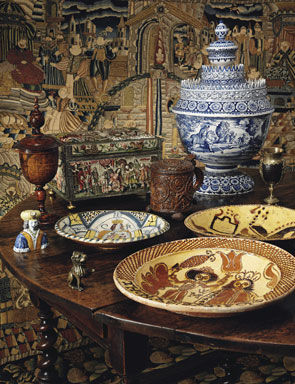
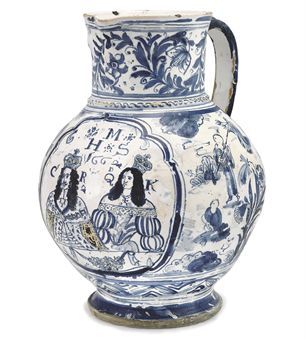
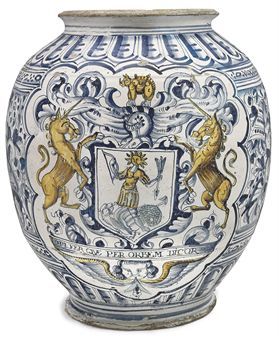
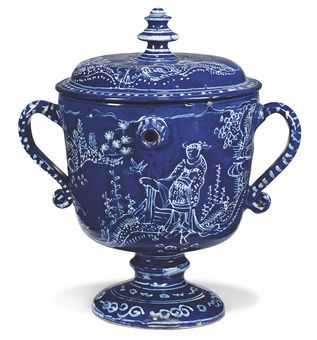



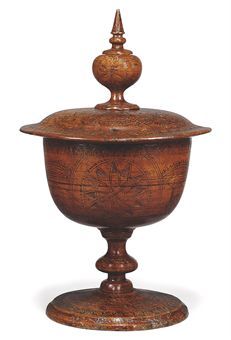
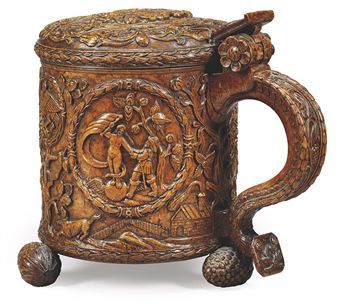



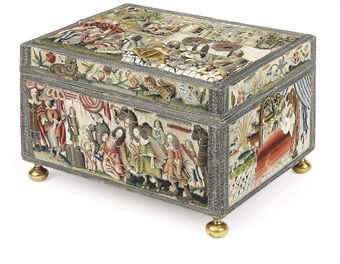



/http%3A%2F%2Fstorage.canalblog.com%2F92%2F54%2F577050%2F51256232_o.jpg)
/http%3A%2F%2Fstorage.canalblog.com%2F87%2F65%2F577050%2F60406570_o.jpg)
/http%3A%2F%2Fstorage.canalblog.com%2F32%2F64%2F119589%2F52551203_p.jpg)
/http%3A%2F%2Fp9.storage.canalblog.com%2F92%2F51%2F119589%2F98216442.jpg)